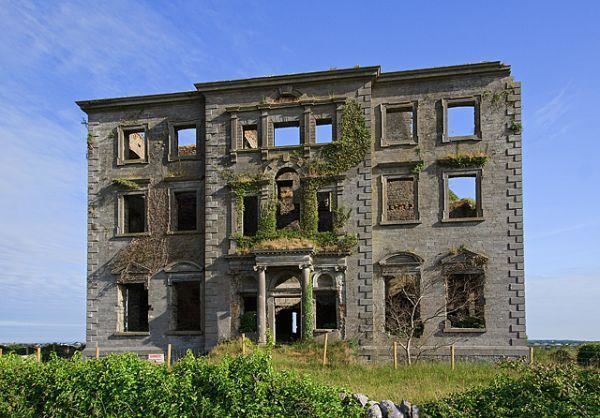Completed 1779 Opened 1779 Demolished 1920 | Client Christopher St.George Province Connacht | |
 | ||
Architect John Roberts, Waterford Similar Eyrecourt Castle, Ballymote Castle, Athclare Castle, Castle Caulfield, Cappoquin House | ||
Tyrone House in County Galway is a ruined manor house, built in the 1770s for Christopher St. George. It is on a promontory by the estuary of the Kilcolgan river, about 2 miles (3 km) from the village of Kilcolgan, County Galway, Ireland.
Contents
Map of Tyrone House, Stradbally West, Co. Galway, Ireland
The house was destroyed by the local Irish Republican Army (IRA) unit during the Irish War of Independence.
History
Tyrone House, County Galway, was built in 1779. (It should not be confused with Tyrone House, Marlborough Street, Dublin, a townhouse designed by Richard Cassels for The 1st Earl of Tyrone of the 3rd creation in 1740.)
Its original owner was Christopher St. George. The house was reputedly designed by John Roberts of Waterford (1712–1796) who also designed Moore Hall in County Mayo and Waterford Cathedral. The St. George family at the time owned much of the area around Kilcolgan.
Arthur French St. George was described as a resident proprietor in 1824.
In 1912, Tyrone House was described as "rather dilipated" by visitor Violet Martin. It served as an inspiration for the novel "The Big House at Inver" by Edith Somerville, published in 1925.
The house was destroyed by the local IRA unit during the Irish War of Independence in 1920. Rumour had it that it was going to be used by the Black and Tans as an infirmary. Tyrone House was uninhabited at the time.
Architecture
It was a big solemn house, grandly planned, three stories high, built on a height, in order to dominate the surrounding land and sea. The front faced south, and the northern side was protected by dense woods, beyond which lay the Kilcolgan river.
